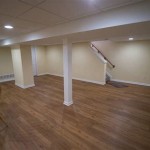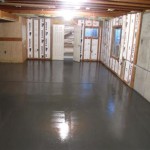Stop Water Seepage Basement Wall
Water seepage in basement walls is a common problem that can cause significant damage to your home. If you're experiencing this issue, it's important to take steps to stop the seepage as soon as possible. Here are a few tips to help you get started.
1. Identify the source of the seepage. The first step is to determine where the water is coming from. This can be a difficult task, as water can seep through cracks or holes in the foundation or walls that are not visible. If you can't find the source of the seepage yourself, you may need to hire a professional to help you.
2. Seal any cracks or holes. Once you've identified the source of the seepage, you need to seal any cracks or holes that are allowing water to enter. This can be done using a variety of materials, such as caulk, epoxy, or hydraulic cement. Be sure to clean the area around the crack or hole before you apply the sealant, and make sure that the sealant is applied according to the manufacturer's instructions.
3. Install a waterproofing membrane. A waterproofing membrane is a thin, plastic sheet that is applied to the inside of the basement walls. This membrane helps to prevent water from seeping through the walls and into the basement. Waterproofing membranes are available in a variety of materials, such as polyethylene, PVC, and rubber. The type of membrane that you choose will depend on the specific needs of your basement.
4. Install a drainage system. A drainage system is a system of pipes and drains that helps to remove water from the basement. This system can be installed either inside or outside the basement walls. Inside drainage systems are typically less expensive to install, but they can be more difficult to maintain. Outside drainage systems are more expensive to install, but they are also more effective at removing water from the basement.
5. Improve the grading around your home. The grading around your home can play a significant role in preventing water seepage in the basement. If the grading is not properly sloped, water can pool around the foundation and seep into the basement. Make sure that the grading around your home is sloped away from the foundation, and that there are no low spots where water can pool.
6. Keep gutters and downspouts clean. Gutters and downspouts help to direct water away from your home. If your gutters and downspouts are clogged, water can overflow and pool around the foundation. Be sure to clean your gutters and downspouts regularly, especially after storms.
7. Consider using a dehumidifier. A dehumidifier can help to remove moisture from the air in your basement. This can help to prevent water seepage in the basement, as well as mold and mildew growth.

Wet Basement Diy Repair Guide Radonseal

How To Fix And Prevent A Leaking Basement Projex

Basement Water Seepage Causes Prevention Mt Drains

Repairing Leaking Basement Walls What Works And Doesn T Work For Wall Leak Repairs

Water Ingress Solutions Waterstop Iection To Concrete Structures

Why Your Basement Leaks In Heavy Rain

Wet Leaking Basement Waterproofing Solutions Albany Schenectady Ny

7 Ways To Prevent Water Seepage In Your Basement

Waterproofing Basement Walls Dos And Don Ts To Remember Bob Vila

Water Leaking Into Basement After Heavy Rain How To Stop It
See Also








